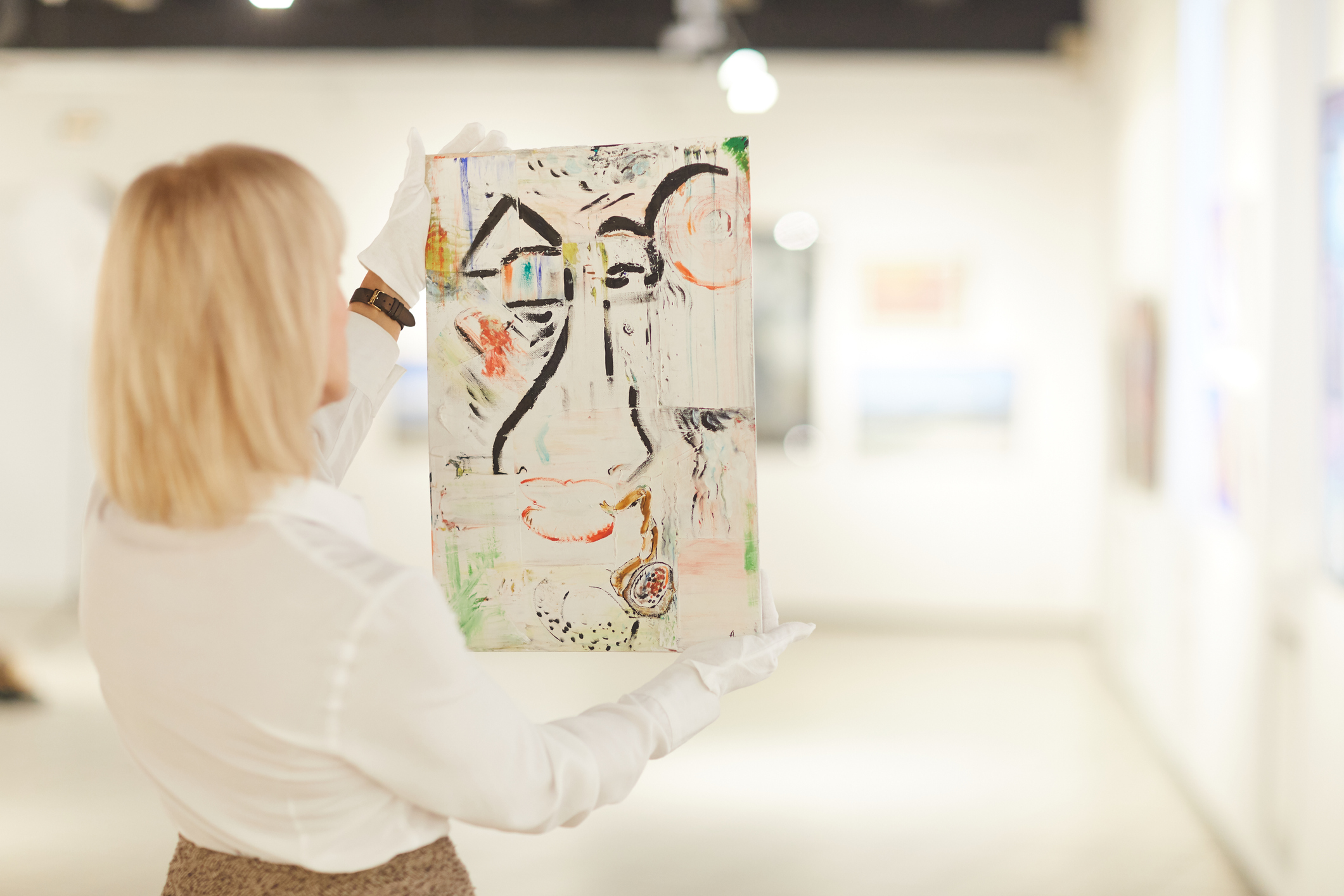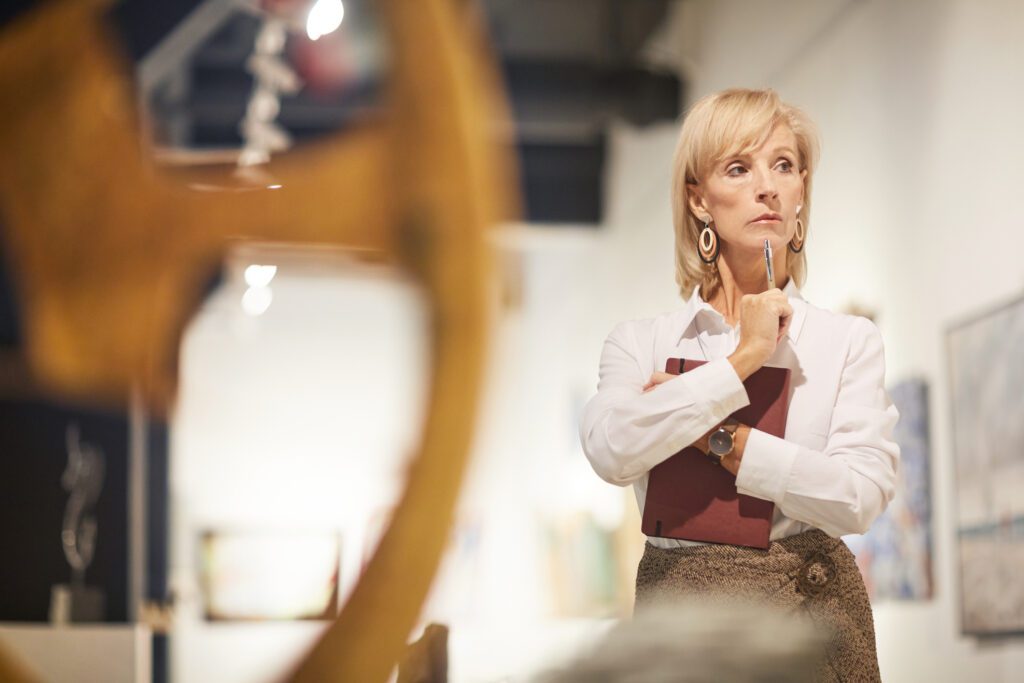
The Valuation Of Art & Why It Matters
Art valuation is defined as the process of estimating the market value of works of art. Now, why is this important and what characteristics are most important to the valuation?
Art valuation plays an important financial role in the pricing of art for purchase, sale, appraisal, and cultural appreciation on all levels of the art market. So how can you be able to assess the value of an artwork? Read on to find out.

What Are Reasons For The Valuation Of Art?
Art valuations are conducted for various reasons. The most commonly associated would be involving the valuation of art for the purpose of sale. This gives a seller an estimate of what they would be offered for their artwork.
The Three D’s
Other reasons for the valuation of art would be conducted are death, divorce, and debt.
- Divorce
In the case of wealthy divorces, there can be an equally wealthy art collection that needs to be divided. A valuation of the collection will be done and in most examples, the collection is sold and the amount is split evenly. In others, like the Macklowe divorce sale held at Sotheby’s, it becomes a massive event for the entire art world to relish in watching.
- Death
Art valuation and estate planning go hand-in-hand. Art is a valuable asset and should be accounted for when either planning for death or in the unfortunate event – after.
- Debt
Another reason would be the financial concept of leverage. Many major banks and auction houses offer financial services involving art lending. This is when an artwork is used as collateral for a loan. The loan is generally the value of the artwork.

How Does The Art Market Operate?
A general understanding of the art market is an important first step when looking to value artwork. The first thing to assess is the difference between the primary and secondary markets.
Primary Market
The primary market is where artwork is purchased from an artist or representative of the artist, such as a gallery or dealer. This market presents works by artists that are still alive and is when the price for an artwork is set for the first time.
Since the primary market is the lowest a successful artist will ever sell their art for, this is often the most affordable the artwork will ever be, which is one benefit for individuals who have a limited budget or are just beginning to collect.
Secondary Market
The secondary market is a lucrative trading game of collectors, dealers, and auction houses buying and selling artworks that are second-hand. As opposed to the primary market, purchasing from the secondary market involves the artwork and the financial and artistic history of that artwork or artist.
The secondary market creates an interesting dynamic between the artwork and the availability to purchase. Over time, an artwork may increase in value depending on the previous purchase value and availability of the artist’s other works.
Oftentimes, artwork like this is held in private collections for a period, slowly appreciating in value. Inevitably the artwork will resurface into the market and be shown like a debutante. This was the case at the May 2022 sale at Christie’s, with Warhol’s Sage Marilyn — a figure and artist that captured the cultural zeitgeist of the art world, and became the most anticipated lot of the spring 2022 season.
For any collector, dealer, and artist, the desired progression is for an artwork to gain value each time it returns to the secondary market.

What Characteristics Affect The Value of Art
Art has characteristics that drive the value up and down depending on the trends of the market. These can be classified as the market demand, liquidity, the artist, condition, and provenance. These characteristics of artwork are key factors to look at when analyzing the value of art. They are as pivotal as the zip code in real estate or the quality of ingredients in a meal.
Market Demand
Because of the fluidity of the art market — especially the secondary market — demand is stipulated through comparables, just like real estate. These historical purchase references of artworks that share similar characteristics will help create estimates of the value of the work.
In addition, because of changing trends in the market through time, subject matter, style, and medium may all affect the market demand for an artwork. Due to this, looking at the most recent comparable sales is essential to ensure an estimate that is reflective of the current time.
Liquidity
Liquidity, or the availability of an asset, has an important role in the art market.
Art is considered an illiquid asset because the sale of an artwork is not an immediate process. The artwork becomes available and then unavailable in the secondary market, and those periods of withdrawal tend to be when the possibility of value appreciation occurs.
There is an inherent liquidity risk associated with art because there is a limited pool of buyers, especially with very expensive pricing. That should be considered, but does not affect the value as much as the ability to sell at the moment.
The Artist
The valuation of art, especially at a commercial level, is weighed heavily based on the artist that completed the artwork. Artwork from an artist that can prove a consistent track record of either sales, critical response, and/or historic influence is more often than not valued at a higher price.
Condition
A condition report is a document itemizing the result of the physical examination of a work of art by a professional in the field, usually, someone whose main occupation is the conservation and restoration of works of art similar in medium, period, and style to the work being examined. The stronger the credentials of the professional, the more weight is given to the condition report.
Another characteristic that contributed to the valuation that falls under the condition report is the period or movement the artwork falls under. In recent auction sales the Modern and Contemporary category is what sees the highest sales, but within those are different periods and movements like Abstract Expressionism and Surrealism.
Provenance
Once a work of art has entered the secondary market, it has a provenance, a French term for the history of ownership of a valuable object.
The degree to which an appealing provenance may actually increase the value of a work is very difficult to determine. However, it’s still considered relevant when it comes to the valuation of an artwork. The status of a collection or collector can greatly affect the valuation hence why at auction the provenance is listed in part of the cataloging of the artwork.

Valuing Art On Your Own
After learning the fundamentals of what characteristics are involved in valuing artwork, there are a few more steps if you want to try to value the art on your own.
Research
When wanting to find the valuation of an artwork, doing your own research would be the first place to start. If there is documentation with the artwork, like the name of the artist, date, certificate of authenticity, etc, then you can look for comparables to the artwork by that same artist.
A great place to look for these would be through an art price database, where all of the artworks by an artist that were sold publicly can be seen in detail. This would be able to provide a fair estimate of the value of the artwork.
An example of one of these price databases would be Masterworks’ price database. This price index database is comprised of over 3 million data points featuring over 300,000 artists, showcasing repeat sales of Modern and Contemporary art from auction records tracing back to the 1960s.
Along with this, conducting research on the artist is also valuable. Artists tend to work in periods where style may fluctuate, some being more valuable than others. If this is the case, then being able to analyze the context of an artwork and see if it fits the qualities of a particular period may affect the pricing.
All factors discussed previously need to be taken into account and meticulously surveyed for the most accurate valuation.
Consult An Appraiser
Independent research can be a helpful starting point for the valuation of art — but not definitive of the value. The best way to get an accurate value for the purpose of reselling your art is to use a neutral appraiser with no conflicts of interest with respect to either the artist or any galleries selling the art.
To be clear, this appraisal is a current market retail value. This could be starkly different from auction results or the pricing of similar work from a gallery. Appraisals are meant to reflect a fair market price, meaning the price a hypothetical buyer is willing to pay meets the price a hypothetical seller is willing to accept. This can fluctuate greatly due to economics, trends, and market demands, so appraisals should be kept up routinely to ensure the value is reflective of the time.
Try Your Hand At The Market
The last attempt in wanting to find the valuation of an artwork on your own would be to enter it into the market.
Finding a private dealer or consultant that would want to purchase on behalf of a client or submitting artwork to an auction house are both examples of entering the secondary. There is no guarantee that the art would sell without impediment, but if so could offer a justified value to the artwork in current market conditions.
This material is provided for informational purposes only and should not be relied on as investment advice